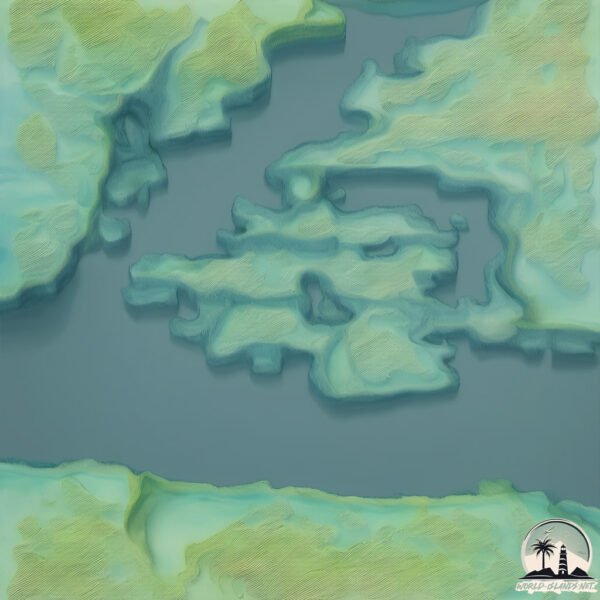Welcome to Pasaje , a Temperate island in the South Pacific Ocean, part of the majestic Pacific Ocean. This guide offers a comprehensive overview of what makes Pasaje unique – from its geography and climate to its population, infrastructure, and beyond. Dive into the details:
Geography and size of Pasaje
Size: 3.982 km²Coastline: 20.7 kmOcean: Pacific OceanSea: South Pacific OceanContinent: South America
Pasaje is a Small Island spanning 4 km² with a coastline of 20.7 km.
Archipel: Cordillera Patagónica Insular – A series of islands in the Patagonian region, known for their dramatic landscapes and part of the Andean mountain range.
Tectonic Plate: South America – A major plate covering the South American continent and part of the Atlantic Ocean, known for the Andes mountain range and significant seismic and volcanic activity.
The geographic heart of the island is pinpointed at these coordinates:
Climate and weather of Pasaje
Climate Zone: TemperateClimate Details: Subpolar Oceanic ClimateTemperature: Cold Summer
Climate Characteristics: Predominantly cold with cool summers and no dry season. Often found in coastal areas at higher latitudes or on islands.
Topography and nature of Pasaje
Timezone: UTC-04:00Timezone places: America/La_PazMax. Elevation: 69 m Mean Elevation: 16 mVegetation: Herbaceous CoverTree Coverage: 35%
The mean elevation is 16 m. The highest elevation on the island reaches approximately 69 meters above sea level. The island is characterized by Plains: Flat, low-lying lands characterized by a maximum elevation of up to 200 meters. On islands, plains are typically coastal lowlands or central flat areas.
Dominating Vegetation: Herbaceous Cover
Vegetation: 6 vegetation zones – Very Highly Diverse Island
Infrastructure and Travelling to Pasaje
Does the island have a public airport? no .
Does the island have a major port? no .
The mean population of Pasaje is 1 per km². Pasaje is Uninhabited. The island belongs to Chile .
Continuing your journey, Escribano is the next notable island, situated merely km away.
PLATOOM - ISLAND TATANA (Official Music Audio)
Uploading for promotional purposes only. No copyright infringement intended.
PLATOOM - ISLAND TATANA (Official Music Audio)
Uploading for promotional purposes only. No copyright infringement intended.
Uploading for promotional purposes only. No copyright infringement intended.
Jason Derulo, Frozy & Tomo - From The Islands (Kompa Passion) (Official Music Video)
Lyrics: (JASON) She said she's from the Islands And I'm just tryna ...
Lyrics: (JASON) She said she's from the Islands And I'm just tryna find her girl You are my desire You're all that I require (TOMO) ...
GERARD JOLING - Ticket To The Tropics
GERARD JOLING -=- Ticket To The Tropics [02.57] [VHS Rip, 1985]
GERARD JOLING -=- Ticket To The Tropics [02.57] [VHS Rip, 1985]
Chile is classified as Emerging region: G20: Group of Twenty – Major economies comprising both developed and emerging countries, representing the world’s largest economies. The level of income is Upper middle income.
News – Latest Updates and Headlines from Pasaje
Stay informed with the most recent news and important headlines from Pasaje. Here’s a roundup of the latest developments.
Loading...
Please note: The data used here has been primarily extracted from satellite readings. Deviations from exact values may occur, particularly regarding the height of elevations and population density. Land area and coastline measurements refer to average values at mean high tide.

